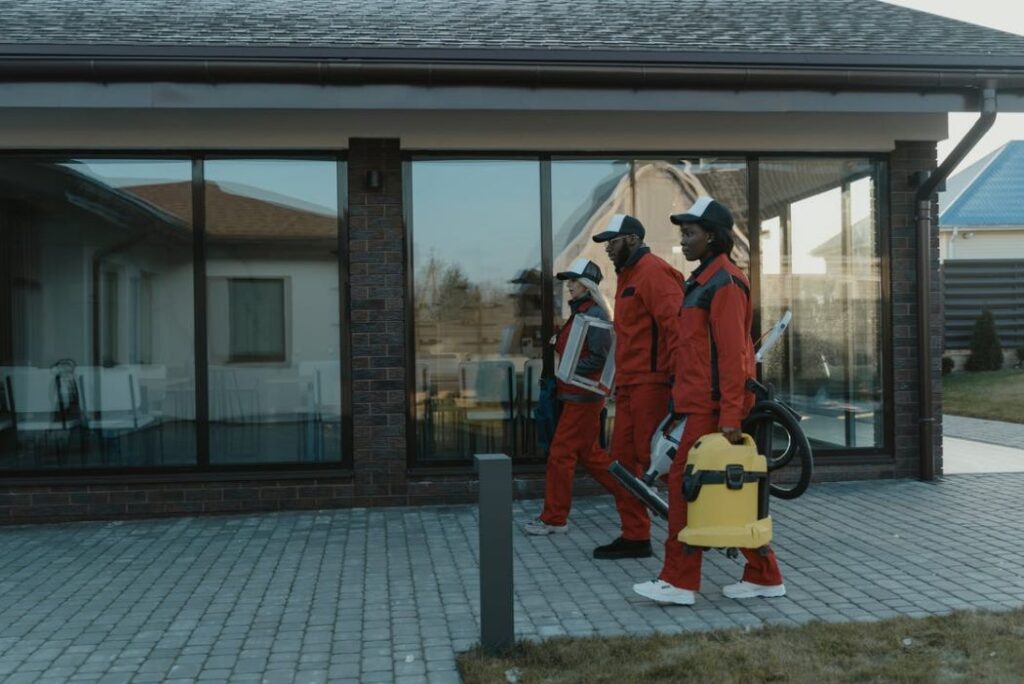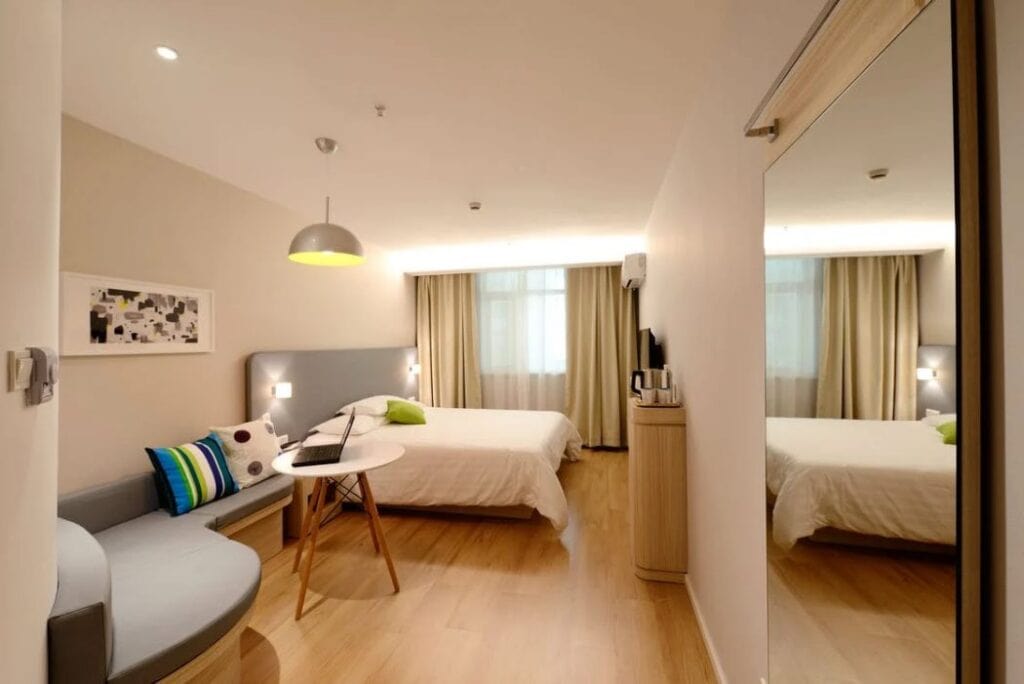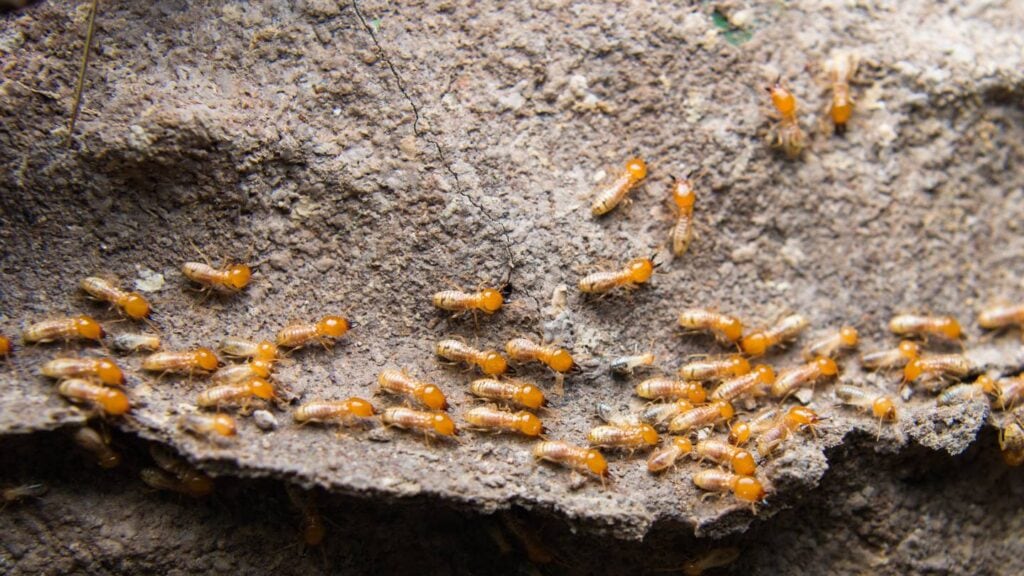Have you ever been out enjoying a beautiful summer day when the sound of bees and wasps suddenly buzzed about you? This makes us wonder, "Are bee and wasp infestations more common during certain seasons?" We are interested in learning about the world's natural rhythms, not merely finding ways to annoy others.
Looking at the numbers, it's clear that bee and wasp activity is highest in the summer, particularly in July and August. They thrive in the mild weather that characterises these months. It is difficult to ignore the association between the temperature and the amount of activity they display.
However, wasps and bees don't simply work throughout the summer. A multitude of circumstances shapes their distinct patterns and behaviours. To better negotiate their presence, we can draw on expert views and gain a better knowledge of their complex biochemistry. With this newfound information, let's explore their world further and learn the ins and outs of their seasonal behaviours.
How to Understand Bees and Wasps
Telling Wasps and Bees Apart: A Comparison of Their Behaviours and Distinctions.
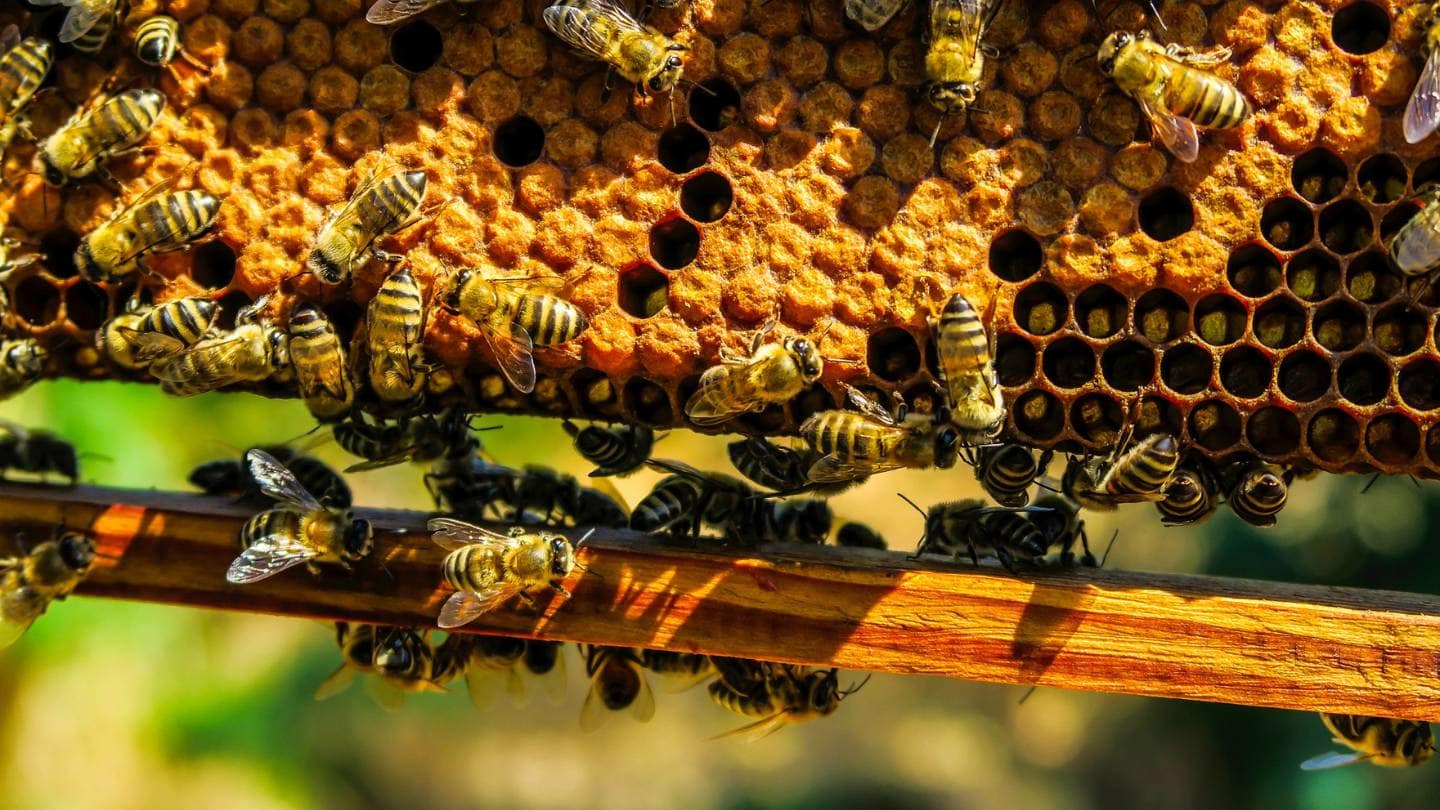
Physical Characteristics
Bees:
- Appearance: Bees usually have a round abdomen, hairy bodies, and a sturdy build.
- Colour: Many bees have irregular stripes of orange or yellow across their brownish or black bodies. On the other hand, metallic bees can be either green or blue.
- Body Structure: A "pollen basket" or "corbicula," a branching structure on the bee's rear legs, is utilised to transport pollen.
Wasps:
- Appearance: The body of a wasp is typically smooth and slim.
- Colour: Warped wasps can have yellow or red patterns and can be any colour from black and brown to shiny blue. Not all species are colourblind.
- Body Structure: Unlike bees, wasps have a short waist, or petiole, that connects the thorax to the abdomen.
Behavioural Characteristics
Bees:
- Diet: Most bees' diets consist of plant-based foods like pollen and nectar.
- Social Behavior: Honeybees and bumblebees are only two examples of the many species of bees that live in intricately structured colonies.
- Reproduction: A "stinger," an adaptation of the ovipositor that serves as a defensive mechanism, is unique to bees. In most cases, a bee will die soon after stinging.
Wasps:
- Diet: As scavengers or predators, wasps eat various insects.
- Social Behavior: Although solitary wasps exist, most species live in colonies. Like hornets and yellowjackets, social wasps can get violent if someone messes with their nest.
- Reproduction: A wasp's stinger is smoother than a bee's, enabling the wasp to sting more than once. Whilst bees can't remove their stinger without dying, most wasps can.
Common Pests By Season
Pests can be a pain all year round, but certain times of year are busier than others, so it helps to know how the weather influences their migration patterns. Here, we'll go over how common household pests change their behaviour throughout the year so that you can better defend your property. We will also go over the best ways for business pest management and end-of-lease pest control in case you already have an issue.
Spring: Mating & Awakening
Pests can be a pain all year round, but certain times of year are busier than others, so it helps to know how the weather influences their migration patterns. Here, we'll go over how common household pests change their behaviour throughout the year so that you can better defend your property. We will also go over the best ways for business pest management and end-ofse pest control in case you already have an issue.
Termites search for damp wood, while bees exploit the newly pollinated air. When the season's first downpour arrives, ants often seek shelter indoors. Many common pests also congregate in the spring to find a partner to reproduce with. Larincludes in and around the house should be carefully observed; the sooner you notice them, the easier it will be to intervene.
Summer: An Outdoor Invasion
Since insects can find plenty to eat and drink outdoors when the temperature rises, you may find fewer inside your home. With one notable exception: when the summer monsoons hit, your home will be infested with thousands of ants.
In Australia, flies are the most annoying summertime pests because they buzz nonstop around the grill and can spread food poisoning. Always use a layer of Happy Wrap or seal your Tupperware containers to keep your produce covered. Because flies can get inside, you should always have an insecticide can on hand and be careful when you open your fly screen doors.
Mosquitoes, another summertime nuisance, multiply rapidly near any water source they can locate. Do not allow water to collect on the floor, and if the infestation gets out of hand, consider turning off your water features for the season.
Throughout the summer, large hives of bees and wasps are built around your home, announcing their presence. Because wasps can be particularly harmful, teach your children to stay well away from them and hire an expert to dismantle the nest. Look for evidence of hidden hives in the overhangs and foundations.
Autumn: Sheltering From Future Cold
Insects and spiders seek cover in the fall in anticipation of winter. Thus, it is common to observe an invasion of bugs indoors during this time. Most will take refuge in warm, dark corners, such as the spaces between your walls. The unsanitary rodents, such as rats and mice, become an even greater problem in the fall.
If you haven't already, seal off any possible entryways to your home in the fall to keep rats out. Before using caulking solution or sealant, check your property for potential entry spots in the flooring, garage, attic, and foundations. Pests love to get in through broken tiles, so check your roof.
Winter: Hibernation Time
Pests usually only cause a little trouble in Australia's colder areas because they hide until spring. Bees and wasps hide in trees and logs during the winter, while most ants stay underground.
In the winter, rats and mice are more likely to break into your home. That's why it's so important to do your yearly maintenance before it gets cold. In places of Australia that are warm and have mild winters, pest activity will slow down, but it will still be there.
Environment Affects Bee and Wasp Infestations
Climate Change Effects On Bees And Wasps
The future of bee and wasp populations is highly affected by climate change. How these changes can impact their life cycles, food supplies, and habitats are as follows:
Modified Patterns of Blooming
Both bees and wasps get their nectar and pollen from flowers. As a result of changes in precipitation and temperature, the length and timing of flowering seasons can change, which could cause bee and wasp populations to diverge.
Changes in the Area Covered
When temperatures rise, insects like bees and wasps may seek cooler climes at higher elevations. Local ecosystems and interactions with other species can be altered due to this migration.
A Surge in the Incidence of Catastrophic Events
Heat waves, droughts, and floods are getting worse and more frequent due to global warming. Because of the death toll, disturbance to foraging activities, and nest destruction that these events can inflict, they can directly influence wasp and bee populations.
Dynamic Shifts in Parasites and Pathogens
Warmer temperatures and altered precipitation patterns can spread bee and wasp parasites and illnesses. For instance, people who are already struggling may face much greater dangers from parasites that do well in warmer climates.
Habitat Changes Due To Human Activity And Urbanisation
The breeding and feeding grounds of bees and wasps are vulnerable to human interference and the growth of cities.
The Decline of Ecosystems
Meadows, woodlands, and grasslands—habitats vital to bees and wasps—are frequently lost or fragmented due to urbanisation. Their ability to find food and places to lay eggs may be compromised due to habitat degradation.
Application of Pesticides
When pesticides are used extensively in cities and farms, they can harm bee and wasp populations. Insects can be poisoned by pesticides either directly or indirectly by contaminating their food supplies.
Rivalry between Different Animal Species
Native bees and wasps may face competition for resources from non-native species introduced to urban areas. There may be shifts in the dynamics and composition of species due to the success of some bee and wasp species in urban environments.
Light Contamination
Nocturnal bees and wasps may have a harder time finding food and navigating around cities due to artificial lighting, which can reduce their chances of survival.
Habitat Disintegration
Bees and wasps may need help locating good places to nest and forage when roads, buildings, and other forms of infrastructure fragment natural landscapes. Isolating populations and lowering genetic diversity through fragmentation makes them more susceptible to environmental stresses.
How to Keep Your Home Pest-Free All Year
Pest control should be your top priority if you value a healthy home environment. Because several of these pests are known to spread disease, eliminating them will make your lodgings healthier. This book will teach you everything you need to know about getting rid of pests.
Stop Pests From Getting Into Your Home.
Making it difficult for common household pests to find a way inside your home is the first line of protection against them. Always inspect the screens on your windows and doors for holes, and patch them immediately if you see any.
When the window stripping becomes too ragged to keep insects out, replace it. Above all, ensure no cracks in your windows or doors. Since these pests use them as their main entrance, seal them as soon as possible.
Clean Up Your Kitchen.
Ants and other bugs will swarm to any remnants of food that you leave out on the kitchen floor or counter. These pests see it as a treasure trove. Keeping your kitchen clean is the easiest way to solve the problem. That is why it is imperative that you promptly clean up any spills by wiping down surfaces, sweeping floors, and storing food.
Additionally, empty the garbage cans as often as you can. These bugs must also find a way to get outside to feed.
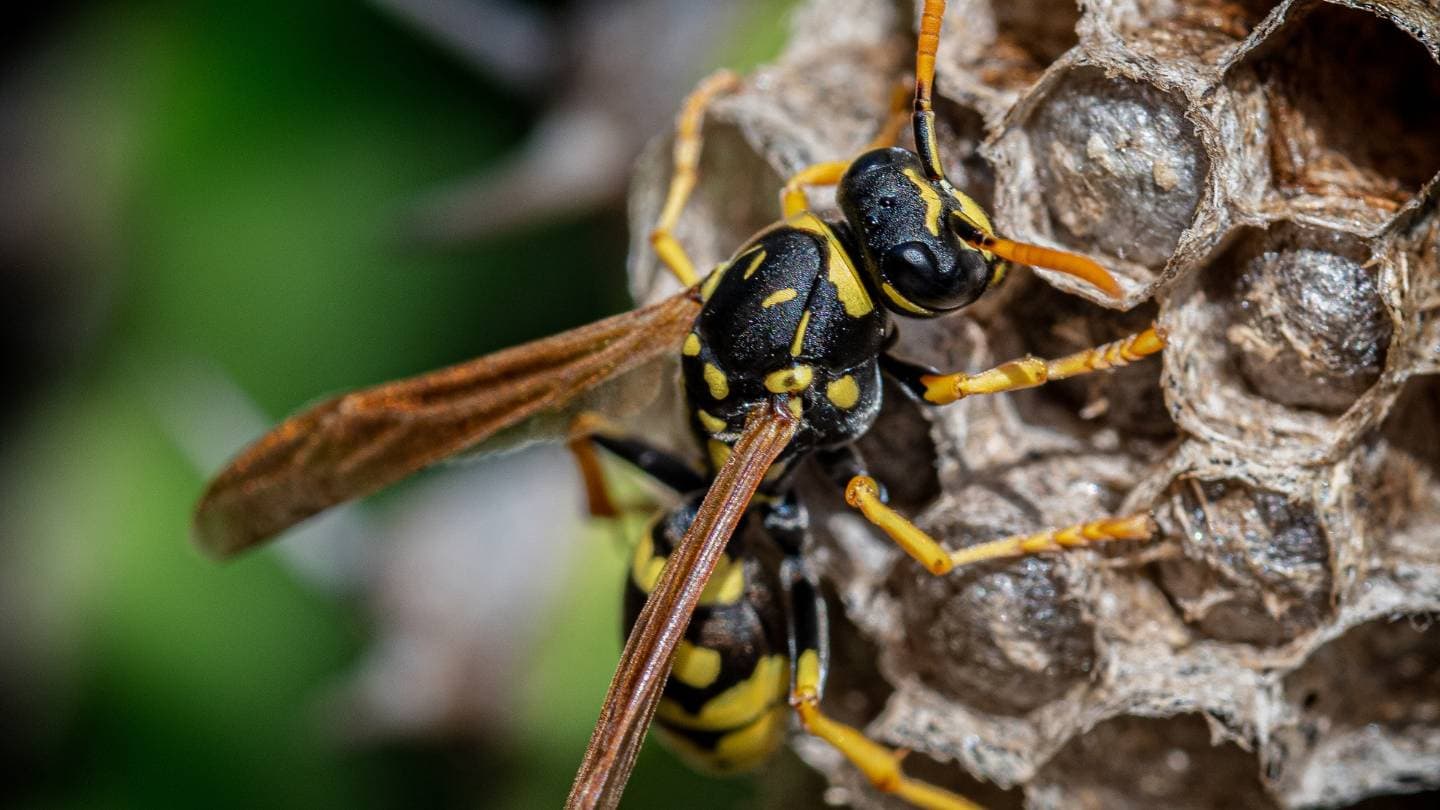
Get Rid Of Water That Is Still
One of the most typical habitats for mosquito breeding is stagnant water. Your loved ones' well-being is at risk because of the diseases they may carry, such as the Ross River virus. Joint pain or swelling and skin rashes are common symptoms. Sometimes, standing water is easy to overlook. Therefore, you should patrol your property and look things over frequently. Inspect your air conditioner and rain spouts for any signs of leaks.
Take Care Of Your Yard.
If you keep your yard clean, you can escape having too much growth. This will stop the growth of an ideal place for pests to nest. Make sure that the bushes and trees nearby are regularly trimmed. Clean up the mess with a rake and pull the weeds out by hand. While this may sound like a bother, it is an important part of keeping pests away.
Conclusion
Some times of the year, like July and August, have more bee and wasp problems because the weather is milder and there is more pollen around. But their behaviour and the way they migrate change with the seasons. Bees have a round belly, hairy bodies, and strong bodies. Wasps, on the other hand, have smooth, thin bodies with short waists.
Pollen, nectar, and other plant-based foods are what bees eat, and beekeepers and bumblebees are social insects. Their unique "stinger" helps them defend themselves, and they die soon after getting stung. Wasps, on the other hand, live in groups and eat different kinds of bugs. Their stinger is softer than a bee's, so they can use it more than once.
By season, termites, bees, ants, and wasps are some of the most common bugs. Termites look for damp wood in the spring, while bees use the air to spread pollen. When it starts to rain, ants go inside to stay dry, and many other common pests gather to find a mate to reproduce with.
Insects like ants, flies, and mosquitoes are the most annoying when they come out in the summer. Use Happy Wrap or seal packages to keep your things safe, keep an insecticide can on hand, and be careful when opening fly screen doors.
Large hives of bees and wasps may form around your home. Teach your kids to stay away from them and have a professional take down the house.
In Australia, bugs and spiders hide in the fall to get ready for winter. This means that there are a lot of bugs inside during the winter. These are the worst times for rats and mice because they can get in through broken tiles. Ants stay underground in the winter, while bees and wasps hide in bushes and logs. Bee and wasp numbers are changed by climate change because it changes their life cycles, food sources, and homes.
Climate change can change the way plants and animals bloom, the area they cover, the number of disasters that happen, the way parasites and pathogens change, the way humans and cities destroy habitats, the use of pesticides, competition between animal species, light pollution, and the breaking down of habitats.
Preventing pests from entering your home, cleaning up food spills, getting rid of standing water, and taking care of your yard are all important ways to keep your home pest-free all year.
It is very important to keep bugs out of your home because they can spread diseases and hurt your health. Check all of your windows and doors for holes, get new window seals, and fix any cracks you find. Clean up the kitchen, sweep the floors, put food away, and empty the trash cans often.
It is also important to keep your yard clean so that pests don't build nests in places where there is too much growth. Regularly cut back bushes and trees, get rid of bugs with a rake, and keep your home healthy.
Content Summary
- Bee and wasp activity peaks in summer, especially in July and August.
- Mild weather during these months contributes to increased bee and wasp activity.
- Various factors influence the distinct patterns and behaviours of bees and wasps.
- Bees and wasps have different physical characteristics: bees have hairy bodies and round abdomens, while wasps are slim and smooth.
- Bees often have stripes and can be black, brown, green, or blue, while wasps have varied colours, including black, brown, and shiny blue.
- Bees possess a "pollen basket" on their rear legs for transporting pollen.
- Wasps are distinguished by a short waist connecting their thorax and abdomen.
- Bees primarily eat plant-based foods like pollen and nectar.
- Many bee species, such as honeybees and bumblebees, live in complex colonies.
- Bees have a stinger for defence and typically die after stinging.
- Wasps' diets consist of various insects, and they act as scavengers or predators.
- Most wasp species live in colonies and can become aggressive.
- A wasp's stinger allows for multiple stings, unlike the bee's single-use stinger.
- Spring is a key season for pest activity, with termites seeking damp wood and bees benefiting from pollinated air.
- Ants often invade homes during the first spring downpour.
- Summer brings fewer indoor insects, but outdoor pests like flies and mosquitoes become prevalent.
- Flies are particularly bothersome in Australian summers, attracted to grills and capable of spreading food poisoning.
- Mosquitoes thrive near water sources and can become a significant problem in summer.
- Bees and wasps build large hives around homes in summer, with wasps posing a particular danger.
- In autumn, insects and spiders seek indoor shelter in preparation for winter.
- Rats and mice become more problematic in autumn, seeking warmth indoors.
- Winter in Australia sees reduced pest activity, with bees and wasps hibernating and ants remaining underground.
- Rats and mice are more likely to invade homes during winter.
- Climate change significantly impacts bee and wasp populations, altering their life cycles and habitats.
- Changes in flowering patterns due to climate change affect bee and wasp food sources.
- Rising temperatures may force bees and wasps to migrate to cooler, higher elevations.
- Increased catastrophic events like heatwaves and floods directly affect bee and wasp populations.
- Warmer temperatures may facilitate the spread of parasites and pathogens affecting bees and wasps.
- Urbanisation and human activity disrupt the breeding and feeding grounds of bees and wasps.
- Habitat loss due to urbanisation impacts bees' and wasps' food and nesting sites.
- Pesticide use in cities and farms poses a threat to bee and wasp populations.
- Competition from non-native species in urban areas affects native bees and wasps.
- Artificial lighting in cities disrupts nocturnal bees' and wasps' navigation and foraging.
- Infrastructure development fragments natural landscapes, impacting bees' and wasps' habitats.
- Preventing pest entry is crucial for maintaining a pest-free home.
- Regularly inspecting and repairing window and door screens helps keep pests out.
- Maintaining a clean kitchen is essential to deter ants and other bugs.
- Emptying garbage cans frequently prevents attracting pests.
- Eliminating stagnant water is key to preventing mosquito breeding.
- Maintaining a tidy yard helps deter pest nesting and infestation.
- Trimming bushes and trees near the house can reduce pest hiding spots.
- Regularly raking and weeding the garden helps in pest control.
- Pests seek shelter in warm, dark indoor places during autumn.
- Sealing potential entryways in autumn is important to prevent rat and mouse infestations.
- Checking for broken tiles and potential entry points is crucial for pest prevention.
- Bees and wasps are less active in winter but may still seek shelter in trees and logs.
- Performing yearly maintenance before winter can prevent rodent infestations.
- Mild winters in some Australian regions still require pest vigilance.
- Standing water should be frequently checked and eliminated to reduce mosquito presence.
- Replacing worn window stripping is important to keep insects out of the home.
Frequently Asked Questions
Bee infestations are most common during the spring and early summer months. This is when bees seek new places to establish hives and pollinate various plants. The warmer temperatures and blooming flowers provide an optimal environment for bees to thrive and reproduce.
Yes, wasp infestations are typically more common during the late summer and early fall months. During this time, wasps become more aggressive as they prepare for winter. They are also attracted to sugary foods and drinks, which are more prevalent during outdoor activities in warmer weather.
Bee and wasp behaviours are closely tied to environmental factors such as temperature, food availability, and mating cycles. Different seasons offer varying conditions that influence these insects' reproductive and foraging behaviours. For example, spring provides abundant blooming flowers for bees to pollinate, while late summer offers ample food sources for wasps to feed their colonies.
To prevent bee and wasp infestations during peak seasons, it is essential to take proactive measures such as sealing cracks and openings in your home, keeping outdoor food and drinks covered, and removing potential nesting sites like old logs or piles of debris. Regular property inspection can help identify and address potential infestation risks before they become a problem.
If you discover a bee or wasp infestation on your property, it is recommended to contact a professional pest control service for safe and effective removal. Attempting to remove the nest or hive without proper equipment and expertise can be dangerous and may result in stings or further aggravation of the insects. It is important to address the infestation promptly to minimise risks to yourself and others.




